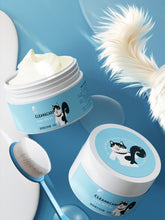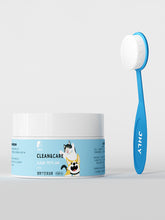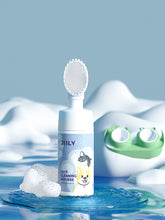Cat Skin Care: Common Skin Problems and How to Solve Them
When it comes to keeping our feline friends healthy, skin care is an essential but often overlooked aspect. Cats, with their luxurious fur and delicate skin, can be prone to various skin problems. Understanding these issues and knowing how to address them can help ensure your cat remains happy, comfortable, and free from discomfort. In this blog, we’ll explore some common skin problems in cats and offer practical solutions to keep their skin and coat in top condition.
Common Skin Problems in Cats
1. Fleas and Ticks
Fleas and ticks are among the most common causes of skin irritation in cats. These parasites not only cause itching and discomfort but can also lead to more serious conditions like flea allergy dermatitis.
Solution:

Regularly check your cat for fleas and ticks, especially if they go outdoors. Use veterinarian-recommended flea and tick preventatives, such as topical treatments, collars, or oral medications. Keeping your home clean and washing your cat's bedding frequently can also help reduce the risk of infestation.

2. Dermatitis
Identify and eliminate potential allergens or irritants in your cat’s environment. This could include certain foods, cleaning products, or even plants. Your vet may recommend hypoallergenic diets, topical treatments, or medications to manage the condition.
Solution:
The frequency of bathing depends on your pet’s breed and activity level. Generally, once a month is enough, but more active or outdoor pets may need baths more frequently. Always rinse thoroughly to remove all shampoo residue, which can cause irritation or dullness if left behind.
3. Ringworm
Despite its name, ringworm is not a worm but a fungal infection that affects the skin, hair, and nails. It’s highly contagious and often appears as circular patches of hair loss with red, scaly skin.
Solution:

If you suspect your cat has ringworm, consult your vet immediately. Treatment usually involves antifungal medications and topical creams. It's also crucial to clean and disinfect your home to prevent the spread of the fungus to other pets or family members. In some cases, an elizabethan collar may be necessary to prevent further licking and allow the skin to heal.

4. Dry Skin and Dandruff
Cats can develop dry skin and dandruff due to a variety of reasons, including low humidity, poor diet, or underlying health issues. Dry skin can cause itching and discomfort, leading to excessive grooming or scratching.
Solution:
Ensure your cat is eating a balanced diet rich in omega-3 fatty acids, which support skin health. Adding a humidifier to your home can also help if the air is dry. Regular grooming with a soft brush can stimulate the skin’s natural oils and reduce dandruff.
5. Abscesses
Abscesses are pockets of pus that form under the skin, usually as a result of a bite or scratch that becomes infected. These can be painful and lead to swelling, redness, and fever.
Solution:

Abscesses require veterinary attention. Your vet will likely need to drain the abscess and may prescribe antibiotics to treat the infection. Keeping your cat indoors and away from potential fights with other animals can help prevent abscesses.

General Skin Care Tips for Cats
- Regular Grooming: Regular brushing not only helps keep your cat’s coat looking its best but also removes loose fur, dirt, and potential irritants. It’s also an excellent opportunity to check for any signs of skin problems.
- Balanced Diet: A diet rich in high-quality protein and essential fatty acids is crucial for maintaining healthy skin and coat. Consider adding supplements like fish oil if your cat’s diet is lacking in these nutrients.
- Hydration: Ensure your cat has access to fresh water at all times. Proper hydration is key to preventing dry skin.
- Environmental Control: Keep your home clean and free of dust, mold, and other allergens. Consider using air purifiers and maintaining a comfortable humidity level to support your cat’s skin health.
When to See a Vet
While minor skin issues can often be managed at home, it’s important to seek veterinary care if you notice any of the following:
- Persistent itching or scratching
- Hair loss or bald patches
- Red, inflamed, or swollen skin
- Unusual lumps or bumps
- Open sores or wounds
Early intervention is key to preventing skin problems from becoming more serious. Your vet can help diagnose the issue and recommend the best course of treatment to keep your cat’s skin healthy and happy.
Tags:









Leave a comment
Please note, comments need to be approved before they are published.